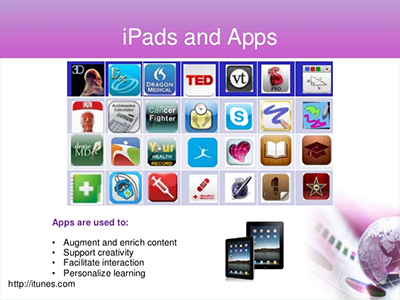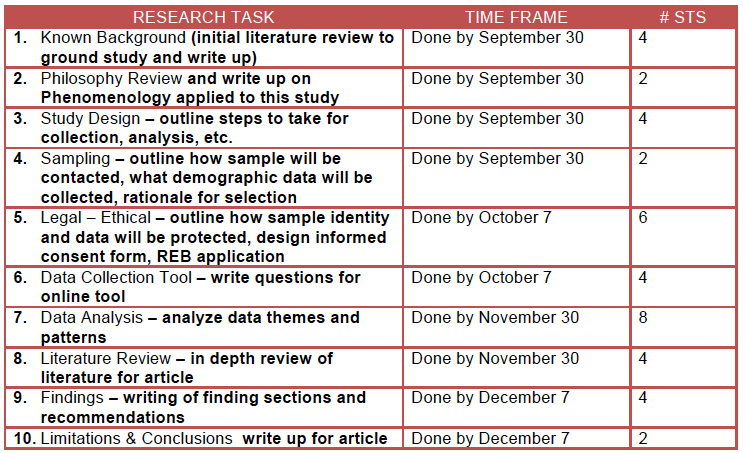by June Kaminski, RN MSN PhD(c)
PART ONE: ASSIGNMENT DESIGN

Most BSN nursing programs include course(s) in nursing research. The program I teach in offers two courses — one in qualitative and the other in quantitative research. The students who come into this program already have a degree in some other discipline, thus about a third to a half of the class have transfer credit for one or both of these research courses. As well, the students have developed their writing, research, and critical thinking skills during their first degree, and are ready for graduate school. Thus, faculty who teach in this program look for inventive and challenging ways to keep the students’ interest while teaching the program content. One example of this is the research project introduced in Part 1 of this paper series. Part 2 will share the data collected and present the findings.
This research project was one of three major assignments in the program’s Critical Inquiry 2: Qualitative Research course. The official course description outlines: “Students will enhance their abilities to participate in the research process through critical reflection of various qualitative research methodologies. They will develop their abilities to comprehend, critique, and utilize qualitative data, using appropriate techniques such as clustering and thematic analysis. Students will gain practical knowledge of the many ways in which qualitative research techniques provide a contextual and in-depth understanding of people’s ways of knowing and experiencing. Students will explore ways to apply research findings to guide reflective evidence-informed nursing practice” (Critical Inquiry 2: Qualitative Research course outline, 2012, p.1).
In previous semesters, students had worked in groups assisting with a variety of research projects. However, in 2014 I decided to organize one project that all students in the class could participate in. I also wanted the focus of the study to have meaning for the students themselves and for the program in general.
One unique aspect of this program is that all theory courses are completed online. iPads and apps are used in the program to enhance the online learning since they:
- Augment and enrich content
- Support creativity
- Facilitate interaction
- Personalize learning
Besides offering students a taste of how to design and implement a qualitative research study, the data collected provided rich input into how students perceived the use of iPads and apps within the online milieu.
The guidelines for the assignment included the following:
“Learners will participate in a segment of an in-class qualitative research project supervised by the course faculty, for the purpose of actively engaging in some part of the research process. Learners will function as neophyte researchers, to gain experience in the application of a part of the research process in the area of nursing education. In 2014, this project will focus on the use of iPads and apps in nursing education. The final result of this collaborative work will be a completed study and publication in the Canadian Journal of Nursing Informatics.
The guiding question for this phenomenological study is: “What is nursing students’ experiences of working with iPads and selected apps in a hybrid degree program?”
The time frame for each student’s participation will depend on the research task selected. Each section selected includes the final write up of that section for the article for publication. Students will sign up for a task during the first two weeks of the course” (Critical Inquiry 2: Qualitative Research syllabus, 2014).
The study process was divided into ten tasks with a timeline and a maximum number of students who could sign up for a particular task. The ten tasks included:
- Known Background
- Philosophy Review
- Study Design
- Sampling
- Legal and Ethical Considerations
- Data Collection Tool
- Data Analysis
- Literature Review
- Findings
- Limitations and Conclusions
Table 1 below summarizes the ten tasks, timeline and maximum number of participating students.

Within the learning management system, this assignment was set up as a ten-part forum. Each forum section corresponded to one of the ten study tasks. The forum interface was selected so that all students had ready access to the work being done by students in all ten task groups. The students did well in adhering to the timelines as much as possible and the study was concluded by the end of the semester. Some tasks were more challenging than others, but all students seemed to reap benefits from collaborating in this fashion.
The resultant process and results will be presented as Part 2 in the summer issue of CJNI. Stay tuned!
SOURCE:
SOURCE:
Kaminski, J. (2017). iPads in nursing education qualitative study Part 1. Canadian Journal of Nursing Informatics, 12(1-2). http://cjni.net/journal/?p=5249





